
Round Yon Virgin!
I still have the Nativity creche that I grew up with in my boyhood home. It’s older than I am. From my parent’s home to mine, it has enjoyed a place in the living room […]

I still have the Nativity creche that I grew up with in my boyhood home. It’s older than I am. From my parent’s home to mine, it has enjoyed a place in the living room […]

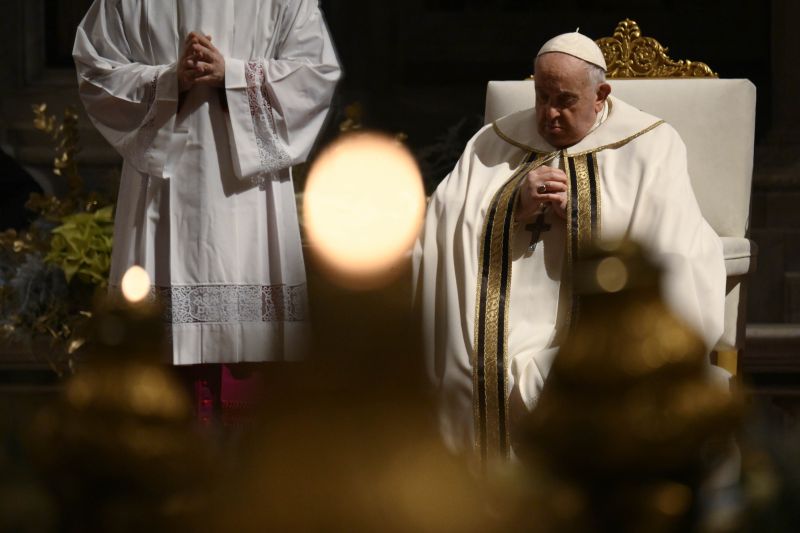 Pope Francis prays during Christmas Mass in St. Peter’s Basilica on Dec. 24, 2023. / Vatican Media
Pope Francis prays during Christmas Mass in St. Peter’s Basilica on Dec. 24, 2023. / Vatican Media
Vatican City, Dec 24, 2023 / 18:00 pm (CNA).
Below is the full text of Pope Francis’ homily for the Solemnity of the Nativity of the Lord, delivered on Dec. 24, 2023, in St. Peter’s Basilica.
“A census of the whole earth” (cf. Lk 2:1). This was the context in which Jesus was born, and the Gospel makes a point of it. The census might have been mentioned in passing, but instead is carefully noted. And in this way, a great contrast emerges. While the emperor numbers the world’s inhabitants, God enters it almost surreptitiously. While those who exercise power seek to take their place with the great ones of history, the King of history chooses the way of littleness. None of the powerful take notice of him: only a few shepherds, relegated to the margins of social life.
The census speaks of something else. In the Scriptures, the taking of a census has negative associations. King David, tempted by large numbers and an unhealthy sense of self-sufficiency, sinned gravely by ordering a census of the people. He wanted to know how powerful he was. After some nine months, he knew how many men could wield a sword (cf. 2 Sam 24:1-9). The Lord was angered and the people suffered. On this night, however, Jesus, the “Son of David”, after nine months in Mary’s womb, is born in Bethlehem, the city of David. He does not impose punishment for the census, but humbly allows himself to be registered as one among many. Here we see, not a god of wrath and chastisement, but the God of mercy, who takes flesh and enters the world in weakness, heralded by the announcement: “on earth peace among those whom he favors” (Lk 2:14). Tonight, our hearts are in Bethlehem, where the Prince of Peace is once more rejected by the futile logic of war, by the clash of arms that even today prevents him from finding room in the world (cf. Lk 2:7).
The census of the whole earth, in a word, manifests the all-too-human thread that runs through history: the quest for worldly power and might, fame and glory, which measures everything in terms of success, results, numbers and figures, a world obsessed with achievement. Yet the census also manifests the way of Jesus, who comes to seek us through enfleshment. He is not the god of accomplishment, but the God of Incarnation. He does not eliminate injustice from above by a show of power, but from below, by a show of love. He does not burst on the scene with limitless power, but descends to the narrow confines of our lives. He does not shun our frailties, but makes them his own.
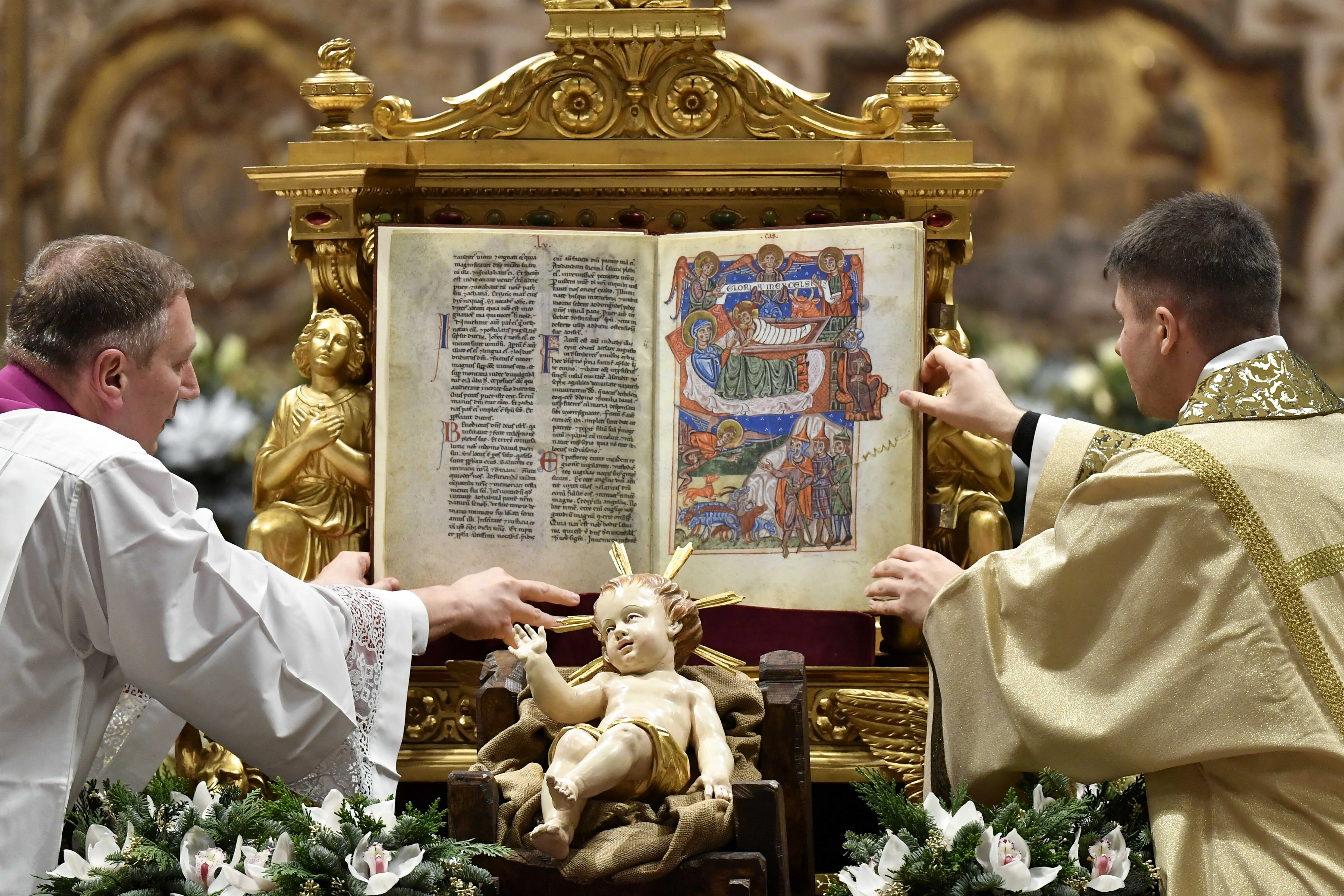
Brothers and sisters, tonight we might ask ourselves: Which God do we believe in? In the God of incarnation or the god of achievement? Because there is always a risk that we can celebrate Christmas while thinking of God in pagan terms, as a powerful potentate in the sky; a god linked to power, worldly success, and the idolatry of consumerism. With the false image of a distant and petulant deity who treats the good well and the bad poorly; a deity made in our own image and likeness, handy for resolving our problems and removing our ills. God, on the other hand, waves no magic wand; he is no god of commerce who promises “everything all at once”. He does not save us by pushing a button, but draws near us, in order to change our world from within. Yet how deeply ingrained is the worldly notion of a distant, domineering, unbending, and powerful deity who helps his own to prevail against others! So many times this image is ingrained in us. But that is not the case: our God was born for all, during a census of the whole earth.
Let us look, then, to the “living and true God” (1 Thess 1:9). The God who is beyond all human reckoning and yet allows himself to be numbered by our accounting. The God, who revolutionizes history by becoming a part of history. The God who so respects us as to allow us to reject him; who takes away sin by taking it upon himself; who does not eliminate pain but transforms it; who does not remove problems from our lives but grants us a hope that is greater than all our problems. God so greatly desires to embrace our lives that, infinite though he is, he becomes finite for our sake. In his greatness, he chooses to become small; in his righteousness, he submits to our injustice. Brothers and sisters, this is the wonder of Christmas: not a mixture of sappy emotions and worldly contentment, but the unprecedented tenderness of a God who saves the world by becoming incarnate. Let us contemplate the Child, let us contemplate the manger, his crib, which the angels call “a sign” for us (cf. Lk 2:12). For it truly is the sign that reveals God’s face, a face of compassion and mercy, whose might is shown always and only in love. He makes himself close, tender, and compassionate. This is God’s way: closeness, compassion, tenderness.
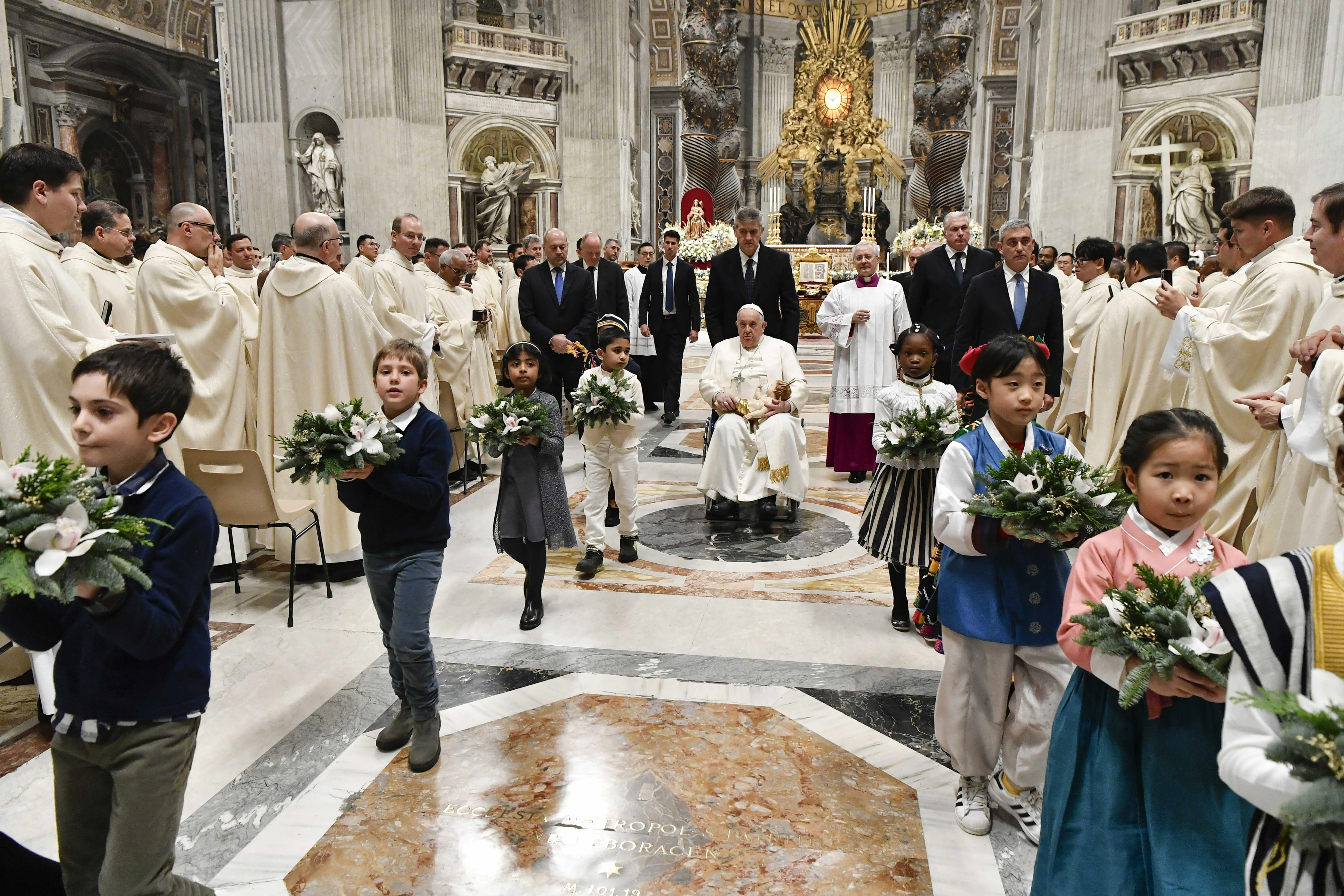
Sisters and brothers, let us marvel at the fact that he “became flesh” (Jn 1:14). Flesh: the very word evokes our human frailty. The Gospel uses this word to show us that God completely assumed our human condition. Why did he go to such lengths? Because he cares for us, because he loves us to the point that he considers us more precious than all else. Dear brother, dear sister, to God, who changed history in the course of a census, you are not a number, but a face. Your name is written on his heart. But if you look to your own heart, and think of your own inadequacies and this world that is so judgmental and unforgiving, you may feel it difficult to celebrate this Christmas. You may think things are going badly, or feel dissatisfied with your limitations, your failings, your problems, and your sins. Today, though, please, let Jesus take the initiative. He says to you, “For your sake, I became flesh; for your sake, I became just like you”. So why remain caught up in your troubles? Like the shepherds, who left their flocks, leave behind the prison of your sorrows and embrace the tender love of the God who became a child. Put aside your masks and your armor; cast your cares on him and he will care for you (cf. Ps 55:22). He became flesh; he is looking not for your achievements but for your open and trusting heart. In him, you will rediscover who you truly are: a beloved son or daughter of God. Now you can believe it, for tonight the Lord was born to light up your life; his eyes are alight with love for you. We have difficulty believing in this, that God’s eyes shine with love for us.

Christ does not look at numbers, but at faces. However, who looks at him amid the many distractions and mad rush of a bustling and indifferent world? Who is watching? In Bethlehem, as crowds of people were caught up in the excitement of the census, coming and going, filling the inns, and engaged in petty conversation, a few were close to Jesus: Mary and Joseph, the shepherds, and then the Magi.
Let us learn from them. They stood gazing upon Jesus, with their hearts set on him. They did not speak, they worshiped. Tonight, brothers and sisters, is a time of adoration, of worship.
Worship is the way to embrace the Incarnation. For it is in silence that Jesus, the Word of the Father, becomes flesh in our lives. Let us do as they did, in Bethlehem, a town whose name means “House of Bread”. Let us stand before him who is the Bread of Life. Let us rediscover worship, for to worship is not to waste time, but to make our time a dwelling place for God. It is to let the seed of the Incarnation bloom within us; it is to cooperate in the work of the Lord, who, like leaven, changes the world. To worship is to intercede, to make reparation, to allow God to realign history. As a great teller of epic tales once wrote to his son, “I put before you the one great thing to love on earth: the Blessed Sacrament… There you will find romance, glory, honor, fidelity, and the true way of all your loves on earth” (J.R.R. TOLKIEN, Letter 43, March 1941).
Brothers and sisters, tonight love changes history. Make us believe, Lord, in the power of your love, so different from the power of the world. Lord, make us, like Mary, Joseph, the shepherds, and the Magi, gather around you and worship you. As you conform us ever more to yourself, we shall bear witness before the world to the beauty of your countenance.

 Standing 100 feet tall, the Christmas Star overlooks the little town of Bethlehem, Pennsylvania (aka “Christmas City, USA”). / Credit: A. Strakey/Flickr
Standing 100 feet tall, the Christmas Star overlooks the little town of Bethlehem, Pennsylvania (aka “Christmas City, USA”). / Credit: A. Strakey/Flickr
CNA Staff, Dec 25, 2023 / 07:00 am (CNA).
There are at least 18 cities and towns in the United States named Bethlehem, but one of the first and perhaps the most famous is Bethlehem, Pennsylvania, a town of 75,000 in the eastern state’s Lehigh Valley, a short drive from Allentown.
Bethlehem was founded in 1741 — prior to the establishment of the United States itself — when Protestant Christians, members of the Moravian Church, purchased land along the confluence of Monocacy Creek and the Lehigh River and cleared it of trees to begin building hewn-log structures.
According to the city’s official website, the town of Bethlehem was christened on Christmas Eve of that year. It’s not the only town in the area to be named after a biblical location — the valley also is home to towns named Egypt, Emmaus, and Nazareth.
In the intervening years since its founding, the town has sought to lean into its name by branding itself “Christmas City USA.” The town even claims to have put up the first documented Christmas tree in the (future) United States, in 1747.
The town has seen a lot throughout its lengthy history, including the deaths of about 500 of its soldiers in the Revolutionary War. One of the original buildings in the town is thought to be the largest 18th-century log structure in continuous use in the United States, the town’s website says.
The town’s status as a nexus of industry is long as well. Just six years after its founding, the town website says, some 35 crafts, trades, and industries had been established, including a butchery, clockmakers, and numerous mills of different kinds. Bethlehem’s Colonial Industrial Quarter had, the town says, the largest concentration of pre-Industrial Revolution crafts, trades, and industries in America and “can be considered America’s earliest industrial park.”

Bethlehem Steel was once one of the most important manufacturers in the entire country, as it provided the steel for such iconic structures as the Golden Gate Bridge, the Empire State Building, and the Hoover Dam.
And according to at least one historian, the United States may not have succeeded in the two World Wars if Bethlehem Steel, with its wartime peak of some 300,000 workers, had not been able to turn out the necessary materials for the country’s military. Bethlehem Steel alone produced 1,127 ships during World War II.
The massive plant in the corporation’s hometown finally closed down for good in 2003 after the company declared bankruptcy two years earlier. Still a prominent landmark on the city’s riverfront, the rusted, dystopian steel mill towers have been preserved and incorporated into a trendy new public park and music venue.
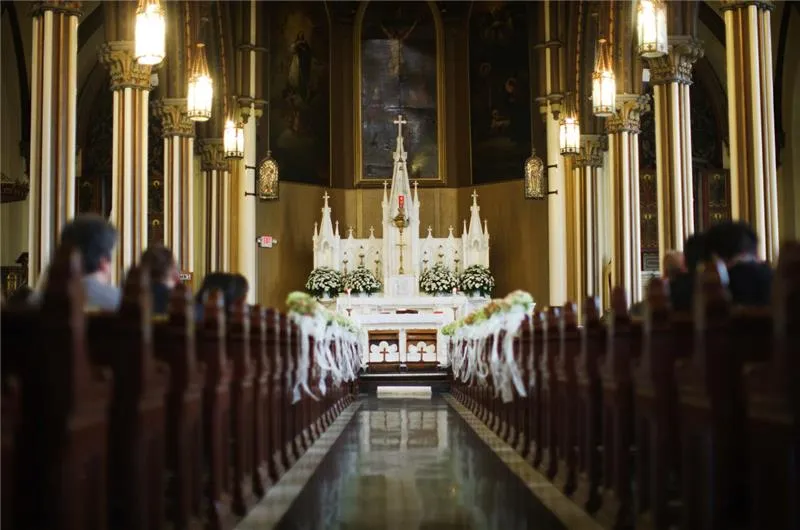
Father Andrew Gehringer, pastor of Holy Infancy Catholic Church, told CNA that his parish, which is located on Bethlehem’s south side, was founded back in 1861 and attracted Catholic immigrants from all over the world who moved to Bethlehem to work in the steel industry. In the town’s heyday, there were six Catholic churches within 10 blocks, he said, with Holy Infancy being the first. Germans, Irish, Hungarians, Polish, Portuguese, and Brazilian people have all made Bethlehem home over the years.
Today, Mass is offered at Holy Infant in English, Spanish, and Portuguese. Gehringer said the multicultural nature of his parish lends itself to numerous fascinating Christmas traditions. For example, Portuguese-speaking parishioners participate in the “Novena de Natal” (Christmas novena), a nine-day prayerful meditation on the birth of Christ.
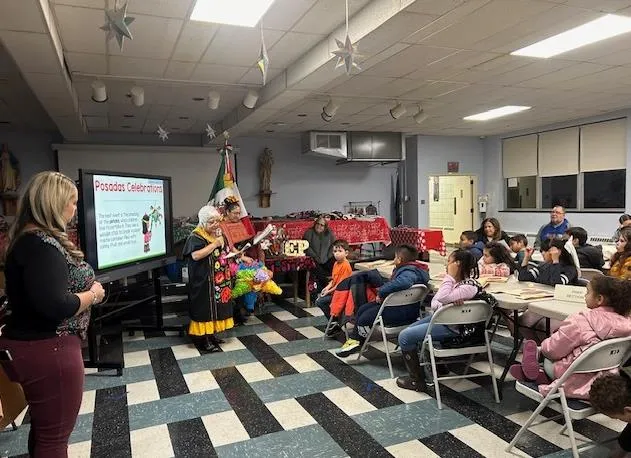
A similar devotion, “Las Posadas,” is practiced by the parish’s Spanish-speaking Catholics. The Spanish word “posada” means “inn,” and this devotion commemorates Mary and Joseph’s journey from Nazareth to Bethlehem, where they sought shelter for the birth of Jesus. Like the Portuguese Christmas novena, Las Posadas begins on Dec. 16 and involves the recitation of the rosary followed by a procession, Mass, and a celebration with a piñata on the nights leading up to Christmas.
“We really do push the multicultural flair of our parish. So we have multicultural dinners, and we have a multicultural summer festival,” Gehringer continued.
The priest said the town, as you can imagine, goes all out decorating for Christmas. Many of the decorations are religious, such as a Nativity scene in the center of the city, as well as innumerable Christmas trees. Gehringer said some of the parish’s Spanish-speakers have been asked in years past to decorate Christmas trees for the city in the manner of their culture.
The town has had a massive Christmas star set up on a nearby mountain since the late 1930s, a five-pointed star with eight rays. The structure is located at Bethlehem’s highest point — 890 feet above sea level — and the star’s LED lighting array, installed in 2010, can be seen 20 miles away. The star has become a symbol of the city, with signs throughout Bethlehem bearing an image of the star and proclaiming “Follow the Star to Bethlehem Attractions.”
Gehringer said it is special to live in a city where the religious aspects of Christmas are so widely celebrated with symbols — which, of course, include the name of the town itself.
“There’s some very Christian symbolism that’s very prominent in our city, that our city puts up,” Gehringer said. “In some towns, they don’t even allow the Nativity set.”

Pope Francis gives his Angelus address on Dec. 24, 2023. / Vatican Media
CNA Staff, Dec 24, 2023 / 11:40 am (CNA).
On Christmas Eve, Pope Francis urged Christians not to confuse Christmas with consumerism but to celebrate the birth of Christ by… […]

A scene from the "Silent Night" Christmas video from the Diocese of Lansing. / Credit: Matt Riedl/Diocese of Lansing
CNA Staff, Dec 24, 2023 / 08:00 am (CNA).
The Diocese of Lansing in Michigan has released a Christmas video featuring… […]

As much as we owe modern Christmas traditions to German and English traditions, there is one to whom we owe special thanks. While the modern tradition of a Christmas crèche with figurines seems to have […]

null / Credit: Lisa Missenda/Shutterstock
Denver, Colo., Dec 22, 2023 / 07:00 am (CNA).
This year, the fourth Sunday of Advent falls on Dec. 24 — Christmas Eve. The next day is Monday, Dec. 25 — the solemnity of the Nativity of the Lord. That m… […]

On the Readings for Sunday, December 17, 2017, the Third Sunday of Advent […]

A bag of coffee from Religious Roast. / Credit: Religious Roast
CNA Staff, Dec 15, 2023 / 08:00 am (CNA).
As Christmas approaches, we may still be in search of unique gifts for people on our lists, so to help you find that special something for… […]

Everyone loves jolly ol’ Saint Nicholas. There is something romantic and cozy about telling Santa stories around the crackling fire. He is an icon of the Christmas season. But not everyone agrees about the real […]
© Catholic World Report